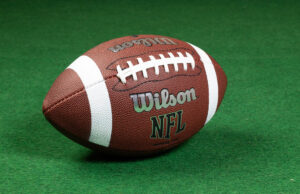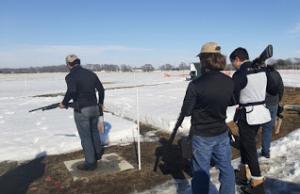At all levels of sport, football must take action to prevent concussions

When Houston Texans quarterback Tom Savage sat in the pocket during the second quarter of the Texans 49ers game, he had no idea what power the seven rushers would bring.
After getting wrapped up and thrown to the turf, the camera zoomed in on Savage entering what is known as the “fencing response.”
After heading to the sideline tent, Savage entered the game the next series. Noticeably woozy from tens of feet above the sideline, fans around the country went up in arms as they watched a man who’s vertebrae just went into shock after a traumatizing hit, jog back into the game. And after week 13’s brutality fest between the Bengals and the Steelers, people are growing in concern over whether or not football is getting too violent.
First off, let’s talk about how much the concussion protocol failed Tom Savage and the league.
After getting back into the tent and supposedly passing the test, Savage was sent back out to play. Following his short stint back onto the field, Savage was pulled off the field by officials and trainers. Savage also had to be restrained by trainers from running back onto the field (which is a total football guy move.)
Bill O’Brien was then quoted after the game while being questioned numerous times about their concussion debacle. “I would’ve never let him in,” O’Brien said. He was referring to the video, which he later concluded that if he would’ve had access, Savage wouldn’t’ve reentered.
Coaches are not allowed to have access to instant replay on the sideline, but trainers are. There is a set elaborate of eyes and minds that make sure the game runs smoothly, protecting players from themselves as well as keeping injuries away from the flow of the game, but it seems that there is something much deeper than just failing to recognize a bad concussion with the access of instant replay. There are spotters that sit above all the action, trained to witness anything from a small limp to a player twitching like Tom Savage was.
Like angels they keep a watchful eye, protecting the players. However, these recent actions have led me to believe that they acted more like demons.
With all the technology at their disposal, how could they let something like this through the cracks? So the question is, what is putting the players in trouble? Is it the game or is it the safety conduct?
By the Tom Savage situation, you would be thinking that it’s the league and organization’s fault, but by any chance, if you saw the previous weeks AFC north battle between the Steelers and Bengals, you might still be thinking it’s too much of a violent game for today’s society.
Or maybe you saw it and think that it’s great for the audience of the game. If you didn’t see it, I’ll detail those events for you.
Week 12’s Thursday night matchup between AFC rivals Pittsburgh Steelers and Cincinnati Bengals was a blast from the NFL’s past, and not in the way you might think. The battle between the two was similar to a gladiator battle inside the Coliseum during Rome’s heyday.
Instead of bronze swords, they used something much more dangerous: their own bodies.
First off, there was an underlying theme to all of this. Vontaze Burfict has recently been crowned the villain of the National Football League due to his dirty play style and high hits. It seems that both the vicious rivalry and karma would play a crucial part in the way this game would unfold for the linebacker.
Burfict’s tarnished reputation has become something of a laughing stock after the Steelers receiver Juju Smith-Schuster delivered a crushing block to linebacker. Juju flew in from off the screen, making a controversial hit, around the chest of the linebacker.
Standing over him like most of America would’ve liked to do, Juju was assessed a one-game suspension for the incident, but now, this brings up the other side of the coin. Is the NFL too soft?
Of course, you’ve probably heard of all the injuries coming from all over the league, but this spike just seems to be something of coincidence. The number of players on injured reserve reached a record high already in late October; however, most of these are nothing related to vicious and concussive hits.
People farthest away from football willing to attack at any moment where the word “concussed: is uttered, will say that football is too violent for a sport to be supported by the American public.
However, what those people don’t understand is that football, and football in general, is not the problem. The world’s most popular sports, from soccer to American football, all have heavy amount of concussions; 47 percent of all concussions from sports occur in high school football according to headcasecompany.com, and 33 percent of those occur in practice.
You cannot take the concussion out of sports; it is inevitable. There is no ideal and conceivable way to prevent the brain from getting slammed around the skull during contact, at least not yet. So, before people go around and blame the league and the sport, I think we should first analyze the equipment, training and people involved in the league’s safety administration.
The NFL is trying to address all these at the moment and is taking away from the physicality that makes the game so thrilling. If anyone’s to blame for the failing of prevention in the league, it should be people, like the ones who cleared Tom Savage to return, and the slow release of safer equipment, but in all reality, no one is really at fault for the excessive rates of CTE amongst former athletes.
Maybe we eliminate facemasks to retain players from leading with their head. Maybe we make softer equipment to squish the blow of bodies, but there is no clear-cut solution for the safety of the league.
Multiple actions will need to make the league safer. So buckle up, it’s going to be quite the controversial ride to the finish line.









You must be logged in to post a comment Login